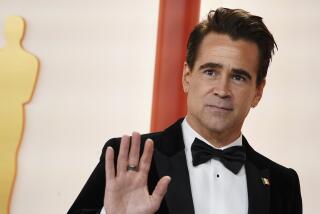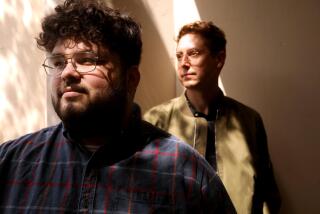SOCIAL ISSUES : Futures for Children Putting Accent on Self-Help Solutions
- Share via
ALBUQUERQUE — When Navajo home day care providers in rural Torreon, N.M., thought they needed a fire engine a few years back, they turned to Futures for Children for help.
The nonprofit organization found a Native American firefighter to help the day care operators with their problem.
He pointed out that because their area had few telephones, few people would be able to report a fire, rendering an engine nearly useless. With his help, they found other ways to reduce fire hazards, including the use of fire extinguishers and smoke detectors.
It was, says Futures President Ruth Frazier, a self-help solution crafted to address a unique situation.
“We have a valuable principle called ‘minimum involvement,’ ” she says. “Never do for people what they can do for themselves. It’s the hardest principle of all.”
That philosophy might smack of the rhetoric of newly empowered conservatives eager to slash social programs, but Futures for Children has been practicing what it preaches for more than 30 years.
Futures serves Native Americans--primarily in New Mexico and Arizona--in several ways.
The Futures Through Education program pairs about 2,700 children from tribes in New Mexico and Arizona with sponsors who provide financial support and encouragement to help keep them in school.
Meanwhile, the organization’s community action program oversees up to 50 projects that embrace self-reliant problem-solving.
And an annual leadership course for Native American teen-agers takes 40 high school students through the process of planning and executing projects that benefit their communities.
Whatever the project, Futures for Children likes to maintain the lowest of profiles.
The group scarcely advertises and accepts no federal, state or United Way money. It relies instead on private donations and grants from corporations and foundations. It has especially strong backing in Southern California, Frazier says.
Several Hollywood stars, including Robert Redford, Kevin Costner, Ted Danson, Kurt Russell, Goldie Hawn and Linda Lavin, have lent their names and time to fund raising over the years.
Futures for Children was born of the vision of Richard Saunders, a sociologist and educator who was executive director of Save the Children in the 1950s. He founded Futures in 1961 at a time when American foreign aid projects were in vogue. But as Frazier tells it, Saunders had identified “a missing ingredient” in the way such programs routinely were run.
“The people themselves, for whom the development was being done, were not involved,” says Frazier, who joined the organization in 1974 and became president in 1981. “They were the objects of it.”
Before his death in 1990 at the age of 89, Saunders left Frazier some guiding principles.
“One was, don’t cut corners,” Frazier says. “Another was don’t take federal funds and get a place of permanence.”
Futures for Children, with 34 full-time and five part-time employees, began operating in the Southwest in 1968 after Saunders was approached by Native Americans who wanted their children to get an education.
That led to the sponsorship program, which has served about 6,000 children over the years.
The program’s 2,100 sponsors contribute $360 a year, about 40% of which goes directly to the child, with the rest paying for program services. The program follows children from kindergarten through college.
“For the sponsor that simply wants to give money, this probably isn’t the program,” Frazier says, explaining that personal involvement is essential.
Sponsors are asked to write, call or visit the children to show an interest in their welfare and scholastic success. Students are expected to stay in school and maintain a C average or better. Frazier says the yearly dropout rate of less than 2% for program participants is a fraction of the national average.
“I can’t tell you the closeness of the relationships that develop,” she says.
More to Read
Sign up for Essential California
The most important California stories and recommendations in your inbox every morning.
You may occasionally receive promotional content from the Los Angeles Times.













